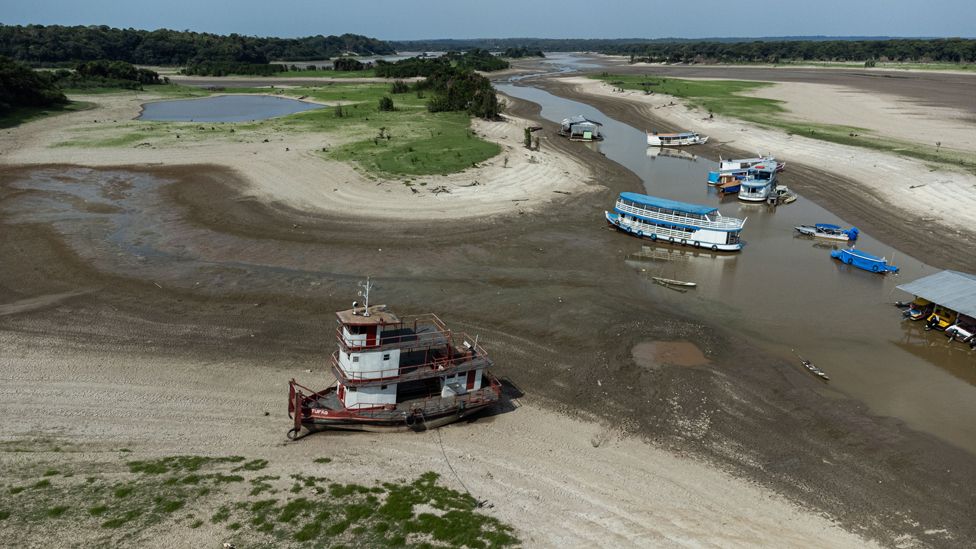Amazon drought: Stranded boats and dead fish
- Published

A severe drought in the Brazilian Amazon is disrupting transport, isolating communities and killing wildlife.
The Brazilian government attributes the drought to climate change and the El Niño weather phenomenon, which has caused the volume of rainfall in the northern Amazon to fall below the historical average and river levels to drop to near record levels.
The low water levels pose a threat to the estimated 30 million people that call the Amazon basin home.
A state of emergency has been declared in Manaus and more than 20 other cities.
Many rivers have dried up, leaving tens of thousands of people stranded in remote jungle villages.
Entire villages that depend on the rivers for a sustainable livelihood and transportation are now struggling to go about daily life and have to receive food, medicine and water by air.
Some inhabitants have been forced to dig wells by hand in search of water.
Fisherman and trader Raimundo Silva do Carmo is one of them. The 67-year-old bathes in and collects water from a well he dug himself in a dry area of Lago do Puraquequara lake in Manaus.
A barge carrying vehicles, gas and supplies ran aground in the low water levels last month and has been stranded on the banks of the Rio Negro river since then.
"Help came too slow to re-float my boat as the water was receding very quickly," explained Junior Cesar da Silva, the captain of the barge tug boat.
The barge was on route to pick up supplies from Borba, 280 kilometres (175 miles) away on the Madeira River, a tributary of the Amazon.
"On the Madeira, beaches and rocks are appearing that we've not seen before," the captain said.
Experts suspect that the heat wave and drought may be the cause of the high numbers of fish and river dolphins, known as boto, which have been washing up dead.
Boat pilot Paulo Monteiro da Cruz has had to row through waters littered with dead fish at Piranha lake, which has been affected by the drought of the Solimões River.
Researchers from the Mamirauá Institute for Sustainable Development have been carrying out tests of the water and the dead animals found in Lake Tefe to try to pinpoint what the exact cause of their deaths is.
Indigenous groups, which rely on the rivers for water, food and to transport key goods such as medicines, are among those hardest hit. They have been pressing the government to declare a climate emergency.
Last month, the government set up a humanitarian task force to deliver food parcels to isolated villages but the indigenous groups say the situation has only worsened since and they need more help.
All photos subject to copyright.
Related Topics
- Published7 October 2023
- Published8 June 2023